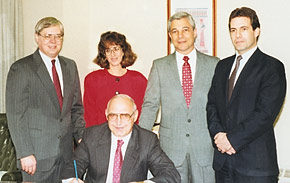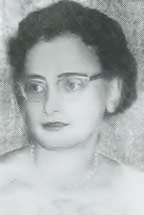HISTORY OF LAW REPORTING
CONSOLIDATION OF OFFICIAL REPORTING
A 1917 law (L 1917, ch 775) set up a Board of Reporters chaired by the State Reporter and authorized the board – subject to the approval of the Chief Judge of the Court of Appeals – to enter into a single contract for the printing and publication of its three publications and the combined advance sheets.
Legislation enacted in 1924 (L 1924, ch 173) abolished the office of the Miscellaneous Reporter and transferred its functions to the office of the Supreme Court Reporter.
A constitutional amendment in 1925 created a State Law Reporting Bureau, under the direction of a single State Reporter, appointed by the Court of Appeals. The State Reporter was charged with publishing the decisions of all the courts of New York. The constitutional authority was exercised in 1938 (L 1938, ch 494). The offices of State Reporter and Supreme Court Reporter were merged, and the Law Reporting Bureau was established with Louis J. Rezzemini serving as the first State Reporter under the modern model of official reporting in New York.
 Above:
Above:
Five-year contract signed on November 26, 1930 by Chief Judge Benjamin N. Cardozo. |
 Above:
Above:
Signing of 1991-1995 publishing contract with Lawyers Co-operative Publishing Company (LCP) on October 23, 1990. From left: George Taylor (LCP), Principal Legal Editor Amy M. Schneider, Fred Romano(LCP), Assistant State Reporter William J. Hooks, and seated, State Reporter Frederick A. Muller. |
|||
|
||||
